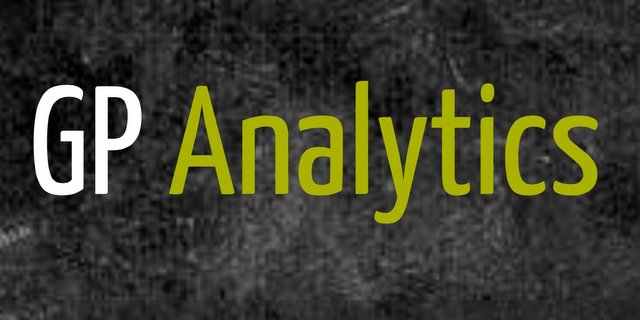 What does the future hold? The data seers at GP Analytics are constantly trying to figure that out. The software and technology company, based out of Seattle, is focused on accurate forecasting and supply chain solutions for craft breweries of any size. On its wholesaler side, GP Analytics offers a variable compensation platform which helps front line sales reps at beverage distributors make informed decisions on what brands and packages to sell in their market.
What does the future hold? The data seers at GP Analytics are constantly trying to figure that out. The software and technology company, based out of Seattle, is focused on accurate forecasting and supply chain solutions for craft breweries of any size. On its wholesaler side, GP Analytics offers a variable compensation platform which helps front line sales reps at beverage distributors make informed decisions on what brands and packages to sell in their market.
“We started as a SaaS for rapidly growing breweries and wholesalers with growing portfolios,” explained Adrian Belobradic, sales director at GP Analytics LLC. “We have since created a suite of tools for craft breweries and wholesalers either just entering markets or trying to manage ever-changing sets of hurdles. Our SaaS Enterprise Level tools helped companies like 10 Barrel Brewing, Hop Valley Brewing, Devil’s Backbone and many others successfully grow their brands at rates over 300 percent annually. With our wholesaler tools, we’ve worked with distributors nationwide from 800,000 annual CE sales [cases of beer] to 7,000,000 annual CE sales, growing their average gross profit per case by 10 to 20 cents.”
Big breweries are experts at organizing and analyzing data to streamline their value chains. Most craft breweries struggle with that level of analytics. Most small brewhouses would kill for a material requirements planning (MRP) system geared toward small breweries — a production planning, scheduling and inventory control system used to manage manufacturing processes. Most MRP systems are software-based, but they often cost too much for small businesses. Well, they used to.
“Our newest set of tools we call The Craft Portal, and it has been used by a third of all beer distributors in the United States to place purchase orders with one or more of their suppliers,” said Belobradic. “This is a secure online tool where a brewery and wholesaler can collaborate, manage their days of inventory on hand and clearly track what is inbound. When a brewery logs in they can also link their VIP data, plan production and track batches. Unlike other production planning tools, this one is easy to learn, friendly to use and because it links together VIP data and your downstream ordering, you can bring all departments together on one platform.”
 The Craft Portal starts at $99 per month with the first three months free. At its core, The Portal is a secure online ordering portal for collaboration between breweries and their wholesaler partners. It offers exportable reports that can be uploaded to your accounting software, a 12-week forecast tool for better production planning and a number of other options. The Portals’ Mix Optimization tool recommends packaging based on percentage of sales by brand and package compared to percentage of inventory already in your network. Once this is balanced, the Issue Master shows when wholesalers break from traditional order quantities and allows the brewery to quickly change packaging mix to meet wholesaler demand.
The Craft Portal starts at $99 per month with the first three months free. At its core, The Portal is a secure online ordering portal for collaboration between breweries and their wholesaler partners. It offers exportable reports that can be uploaded to your accounting software, a 12-week forecast tool for better production planning and a number of other options. The Portals’ Mix Optimization tool recommends packaging based on percentage of sales by brand and package compared to percentage of inventory already in your network. Once this is balanced, the Issue Master shows when wholesalers break from traditional order quantities and allows the brewery to quickly change packaging mix to meet wholesaler demand.
The distributor side of data
GP Analytics has a background in beer distribution, so naturally its fastest growing product is actually on the wholesaler side. Called VxP (short for “Volume x Profit”) this tool is app-based and updates daily to show frontline sales reps how much they need to sell to reach sales goals set by the wholesaler. At its core is a variable compensation tool that also helps the distributor grow cents per case, minimize finished product loss (i.e. old beer) in the market and compensates the sales reps for selling the right products into the right accounts instead of the old incentive model, which can ultimately hurt retailers and distributors by brands not moving and ultimately going old instead of selling.
“This program is great for craft breweries who cannot or do not run incentives,” noted Belobradic. “In large part, craft brands are higher margin for the distributor and continue to gain sales velocity at retail. These are the brands VxP identify as the best to meeting the individual sales rep goals.”
Forecasting is difficult, accounting is tedious and production planning systems are complicated. Small breweries can easily get pigeonholed into expensive systems that are tough to customize or ones that don’t work well with other platforms or programs. Technology is about demanding those tools work together. That’s how GP Analytics sees it. But even without these tools, there are things a brewery should be tracking.
“Not every brewery can afford customized forecast tools like we offer, but things get complicated quickly,” said Belobradic. “My advice to new or established breweries is to keep your data. Even if it’s just total barrels sold by week by brand and distributor or through your tasting room, this information will be greatly beneficial to you long term. The more you can keep, the better. Work with your distributors to come up with a plan. The more you can meet with them and tweak the numbers, the better. Once a month would be great, but realistically once a quarter is probably where you will land. Finally, ask for your data. Distributors have bigger and better databases than most breweries and if asked are usually open to sending weekly reports about sales.”

Linking distributor and brewer data streams, craft breweries can harness predictive tools that can help them plan for a successful future. Since GP Analytics seems to have its hands on the proverbial crystal ball, we wondered aloud what sort of insights they had into the craft beer marketplace right now.
“Hyperlocal and SKU reduction are the trends I see on the horizon,” Belobradic suggested. “Consumers and distributors alike are having trouble knowing what is good, what is fresh and where brands should or do live. The macrobreweries with roots in post Prohibition U.S. had limited demand and growing retail cooler space — especially off-premise. This meant someone had to fill the shelves and instead of new brands coming into the market, the largest breweries filled the shelves with either their new flavor creations or new package sizes — selling these package sizes on the right brand and package for any occasion. Now that there are more suppliers, a craft brewery might only get one or two shelf placements. There is no need for so many package sizes that you are continuously changing fillers or ordering minimums on things for one key account or the local chain. It’s just as easy to sell four, six or 12 cans as it is to sell four, six or 16 cans.”
If a brewer is still a little uncomfortable with all this data wizardry, GP Analytics comes with heavy cred. Anheuser-Busch InBev has implemented its enterprise level tools, CraftedMRP, into all its newly acquired breweries, so the company’s worked with everyone from Devil’s Backbone to 10 Barrel. But it’s also worked with some great indies. Lewis & Clark Brewing Co. in Helena, Mont., has been its longest independently owned brewery partner. The company just went through a large expansion in part, according to GP Analytics, because of its continued forecasting and supply chain technology. The relationship started almost four years ago when GP was purely an SaaS company. Lewis & Clark recently implemented GP’s newest set of brewery tools, The Craft Portal, and have found increasing success in consistent wholesaler orders. The company wants to work with more independents and is even willing to cut you a deal.
“Hell yeah,” said Belobradic. “We love making deals with breweries that work with CBB. You all are awesome people to start and are the only group putting out quality industry news on a daily basis. How about 10 to 15 percent discount on any new CraftedMRP clients for the first year? Sound good?”
Sounds good to us. Just tell’em CBB sent you.





Leave a Reply
You must be logged in to post a comment.